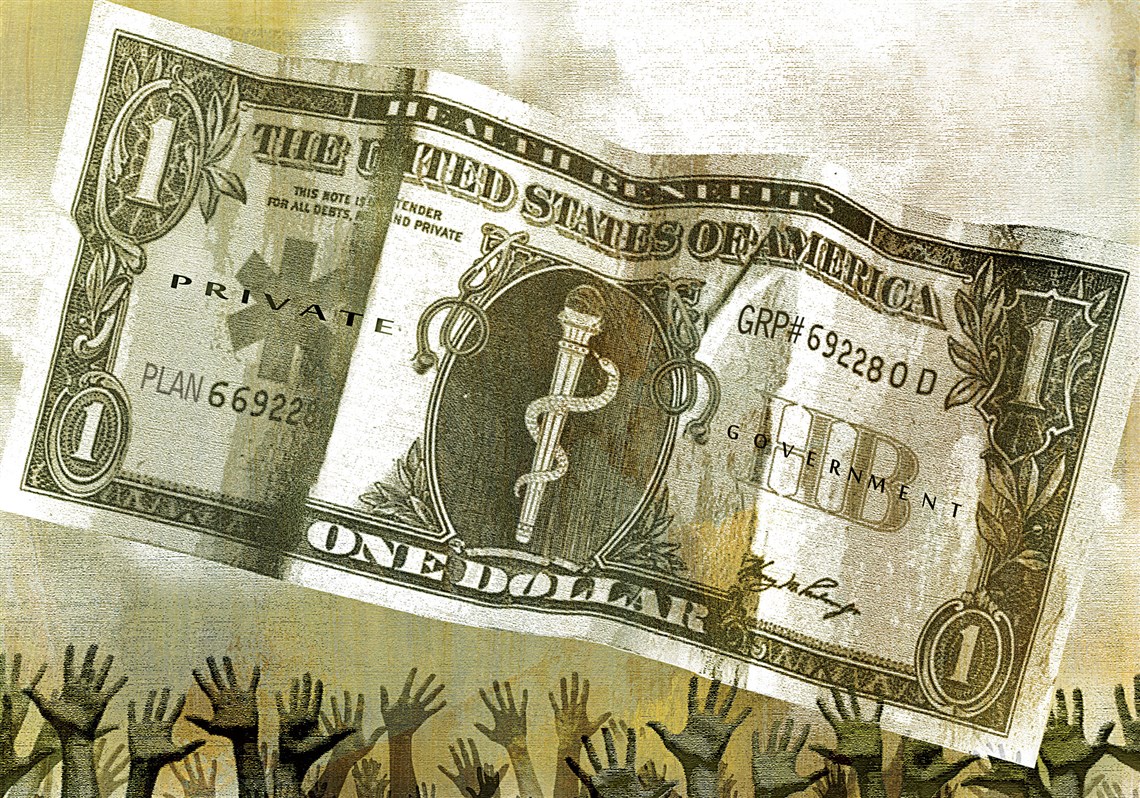как мафии лекарей и страховщиков убили дешёвую медицину в Америке

CHEAP MEDICAL BENEFITS by FRATERNAL SOCIETIES
... fraternal societies ... tended to expand their sickness funds into medical benefits.
They were particularly drawn to “lodge practice” medicine:
- in which a local lodge would hire a physician (or several) to care for their members.
- Typically, each member paid $2.00 per year and the lodge doctor would be their source of primary care.
- If they became seriously ill, they might engage a specialist on a fee-for-service basis.
- In some cases this fee covered only the lodge member, in others it included family members.
- In some cases medications and minor surgery was covered, in others it was not
The benefit proved extremely popular and grew exponentially
- in just a few years after the turn of the 20th century.
- The King County Medical Society (Seattle) estimated 15,000 people were covered in that area in 1906,
- compared to “only a few hundred” in 1899.
- Surveys in Pennsylvania found the numbers doubled from 1908 to 1912.
- Just three societies (Moose, Eagles, and Foresters) employed “several thousand doctors to look after the medical needs of a half-million members” in 1910. [xiii]
PUSH BACK FROM ORGANIZED MEDICINE
Unfortunately, this fraternal lodge movement ran smack dab into a concentrated push by organized medicine:
- to improve its fortunes
- by increasing its professionalism and
- reducing its numbers,
- thereby raising their income.

Around the turn of the century, the American Medical Association (AMA) began a drive
- to increase the professional reputations and
- incomes of its members.
- In 1901 it reorganized from a direct membership association into a confederation of state medical societies,
- which were in turn confederations of county societies
- Any physician, who wanted to belong to the county society, automatically became a dues paying member of the state society, and hence, a member of the AMA
Physicians were motivated to join their county societies
- in part because the local societies agreed to defend member physicians from malpractice litigation
- and often could influence hospital privilege policies
The AMA’s efforts were astoundingly successful
- In 1900 it represented only 8,000 of the 110,000 physicians practicing medicine in the United States
- By 1910, it represented half the profession. [xiv]
- This new power enabled the AMA to aggressively strengthen professional licensing laws at the state level
It also began to take control of medical education:
- by requiring standards of accreditation for medical schools
- as recommended by the landmark Flexner Report in 1910
- These standards were built into state accreditation laws.
- These efforts were also remarkably successful
- In a single generation, from 1900 to 1925, the number of medical schools was cut in half
- as were the number of medical students
- The impact on minorities and women was even more profound
- African-American medical schools shrunk from 7 to 2
- and women and Jews were largely excluded from medical education
- Most of the schools that survived, were affiliated with hospitals and universities
- and medical education became inseparable from hospital based clinical training and research oriented universities
The newly powerful voices of organized medicine went to work to end the practice of "lodge medicine"
- They objected to the idea that common workmen could be their bosses and
- that competing for lodge contracts on an annual basis depressed their incomes
- They decided to drum out lodge physicians from the profession
- They were not subtle
- The Pennsylvania Medical Journal editorialized in 1904 that:
- “the ‘club doctor’ must be shut out of the profession”
- Beito writes:
- “No opprobrium was off limits in depiction of the lodge doctor.
- He was a ‘scab’, who broke ranks with professional solidarity,
- an incompetent ‘quack’ spewed out by a low-grade diploma mill
- and most unforgivably, a ‘huckster’ bent on commercializing the noble art of medicine"
- County medical societies were especially active in punishing such physicians,
- labeling them as unethical, depriving them of membership, boycotting them, and often getting hospitals to deny admitting privileges
Some fraternal societies challenged the restrictions as illegal restraint of trade
- but this was in the midst of the Progressive Era,
- which was committed to a society, in which a well-educated elite was entrusted to manage the affairs of the populace
- Judges, being part of that elite, were unsympathetic to the pleadings of uneducated workers

PUSH BACK from INSURANCE INDUSTRY
So, as in England, American physicians did what they could to terminate one the primary benefits of fraternal society membership
- low cost medical services
- Also, as in England, the commercial insurance industry, having awoken to the market potential of life insurance
- attacked the other primary benefit, low cost life insurance
- It’s easy to see why the commercial insurance companies were alarmed
- Beito writes:
- “Societies attracted millions of Americans and posed stiff competition to the old-line (commercial) companies.
- A direct comparison of fraternal and old-line rates shows why.
- In 1896 the median annual assessment paid by members of the 29 leading fraternal orders was just over $10 per $1,000 of insurance.
- An annual premium for a leading old-line policy of the same value, by contrast, was:
--- about $20 for a man at age 25 and
--- $48 at age 50”
Here is an early example of “crony capitalism” or corporate rent seeking
- If a company is having trouble competing in the market
- it goes to the legislature and gets them to use the force of government to hurt their competitors
This was true not only for commercial insurers versus fraternal societies,
but for some of the older established fraternals versus the newer start-ups
- Some of the older societies were beginning to have problems paying benefits as their membership aged
- They had to impose additional assessments on existing members
- and they began to use aged-based rating rather than equal premiums for all their members
- They began to push for state-level regulations in 1900 through what was known as the Force Bill
- This bill exempted older societies, but mandated that newer societies use age-based rating
- It was adopted by 7 states before the effort fizzled out
- On the federal side, Senator John Dryden (R, NJ),
- who was also the founder and president of the Prudential Insurance Company
- introduced legislation in 1904 that would have disallowed fraternal societies from using the U.S. Mail
- The bill didn’t go anywhere but it served as a warning shot about future efforts
As the societies began to look more like insurance companies
- with age rating and accumulated reserves,
- the state insurance commissioners began to push for oversight of their activities
- There was initial resistance, but increasing numbers of the fraternal societies decided it was better to have a seat at the table
- (to borrow from recent Obamacare negotiations) and help shape the new requirements
- than to fight it outright
- By 1919 what was known as the New York Conference Law
- which standardized the regulation of fraternal organizations, including the rates and benefits and placed them under the control of state insurance commissioners
- had been adopted in 40 states
PUSH BACK from EMPLOYERS
At the same time, there was a sustained campaign to enact Workman’s Compensation laws across the country
- This campaign was strongly supported by employers,
- who wanted protection from liability for workplace injuries
- and to better manage and predict the expense of industrial accidents
- The first law requiring companies to provide workers’ compensation was passed in 1902
- and by 1921 all but 6 states had enacted similar legislation
- This, too, was a blow to fraternal societies
- which had been cooperatively offering benefits to sick and injured workers for many years

_____________________________________________
http://affluentinvestor.com/2017/10/mutual-aid-societies-fraternal-organizations-united-states/
https://en.wikipedia.org/wiki/Benefit_society